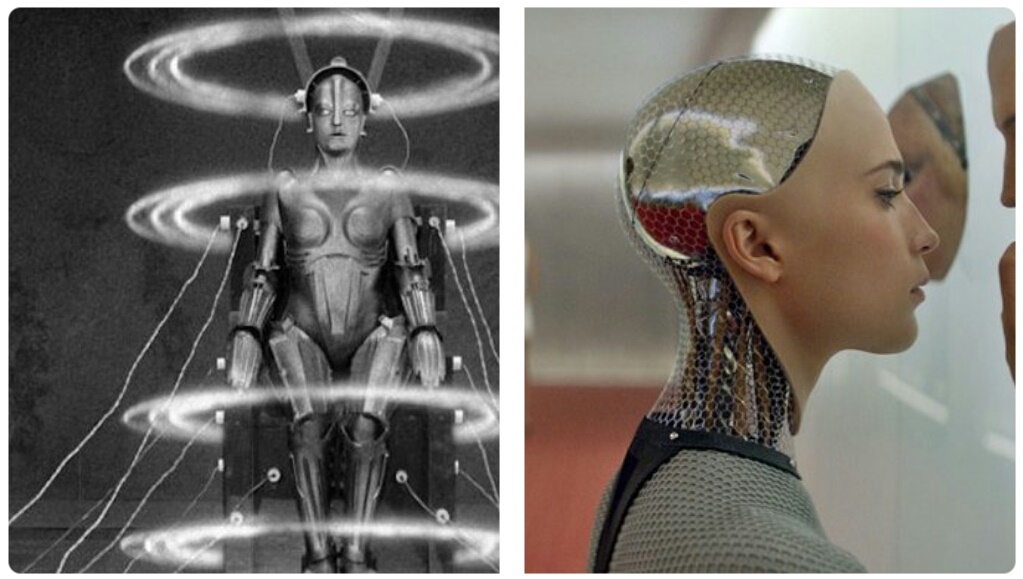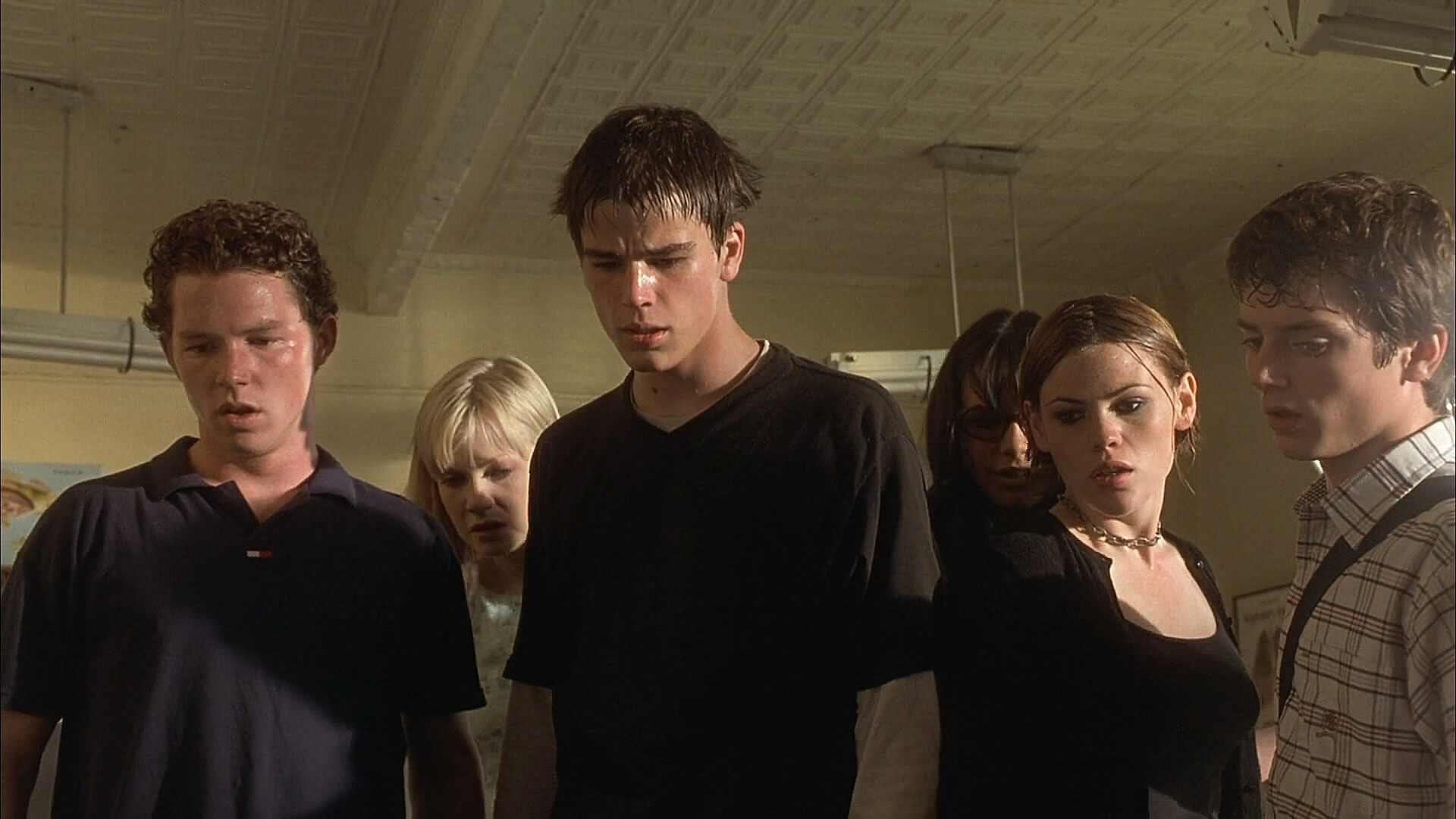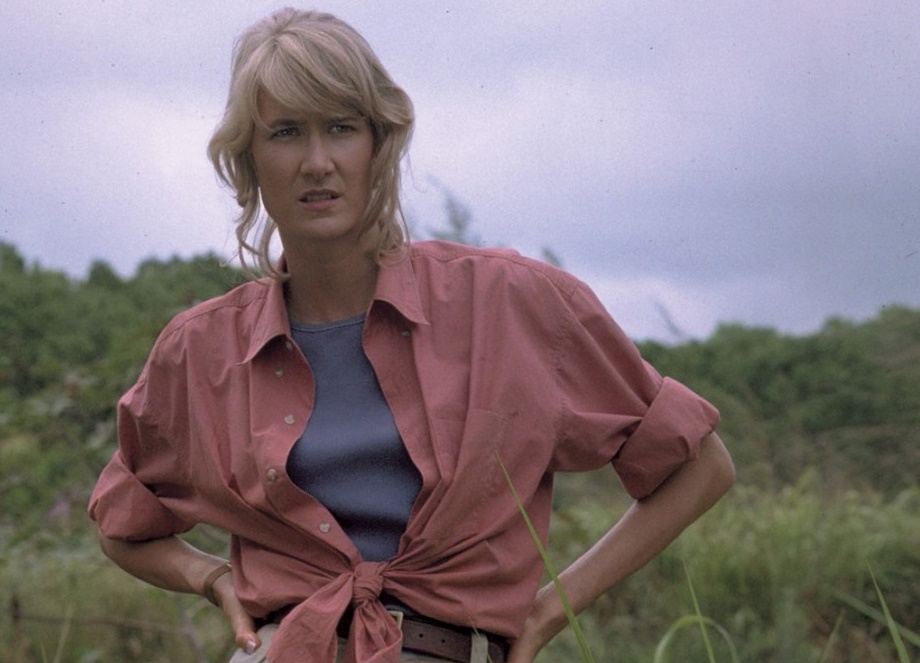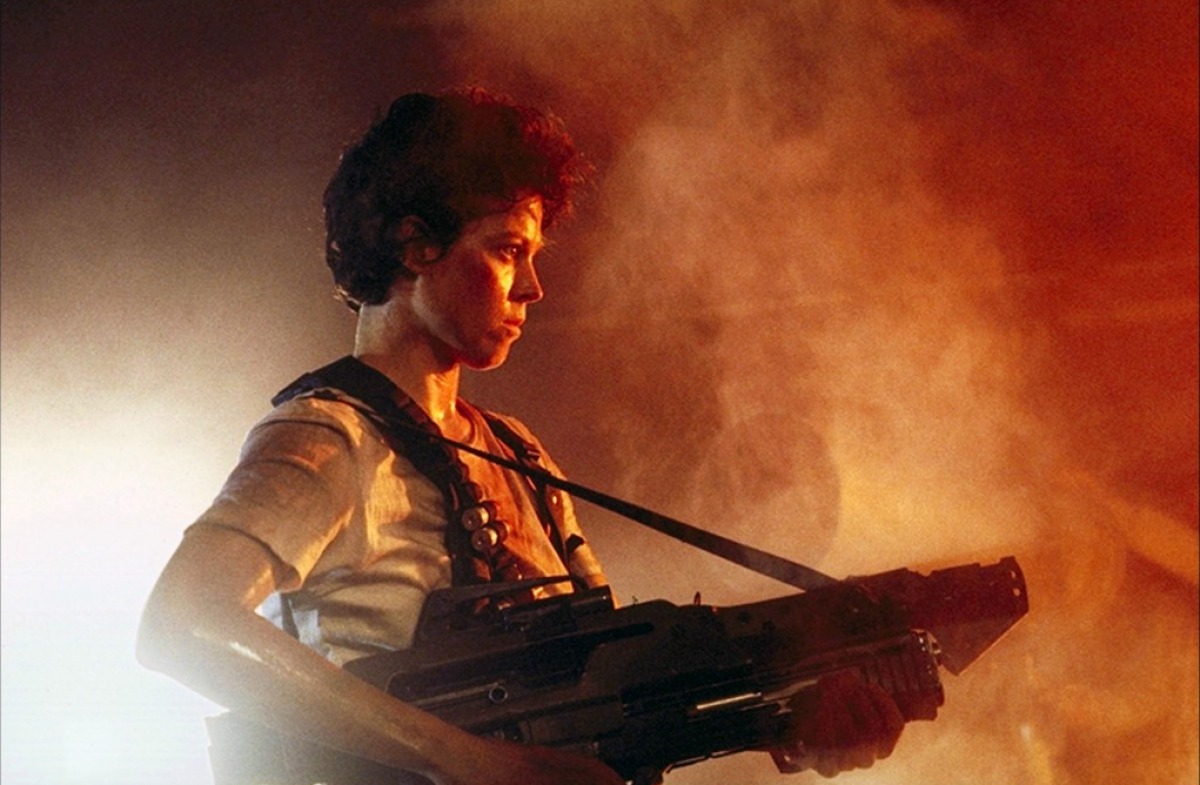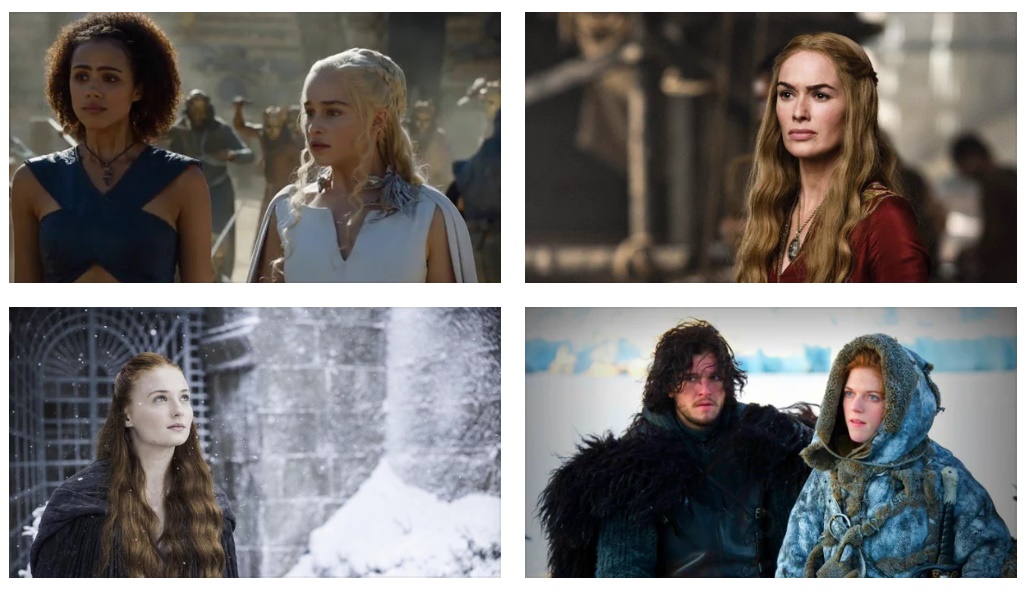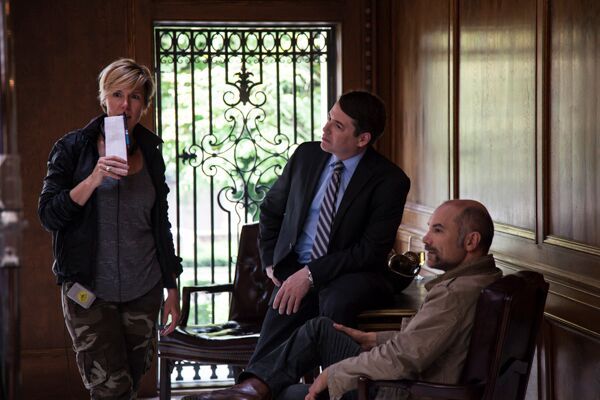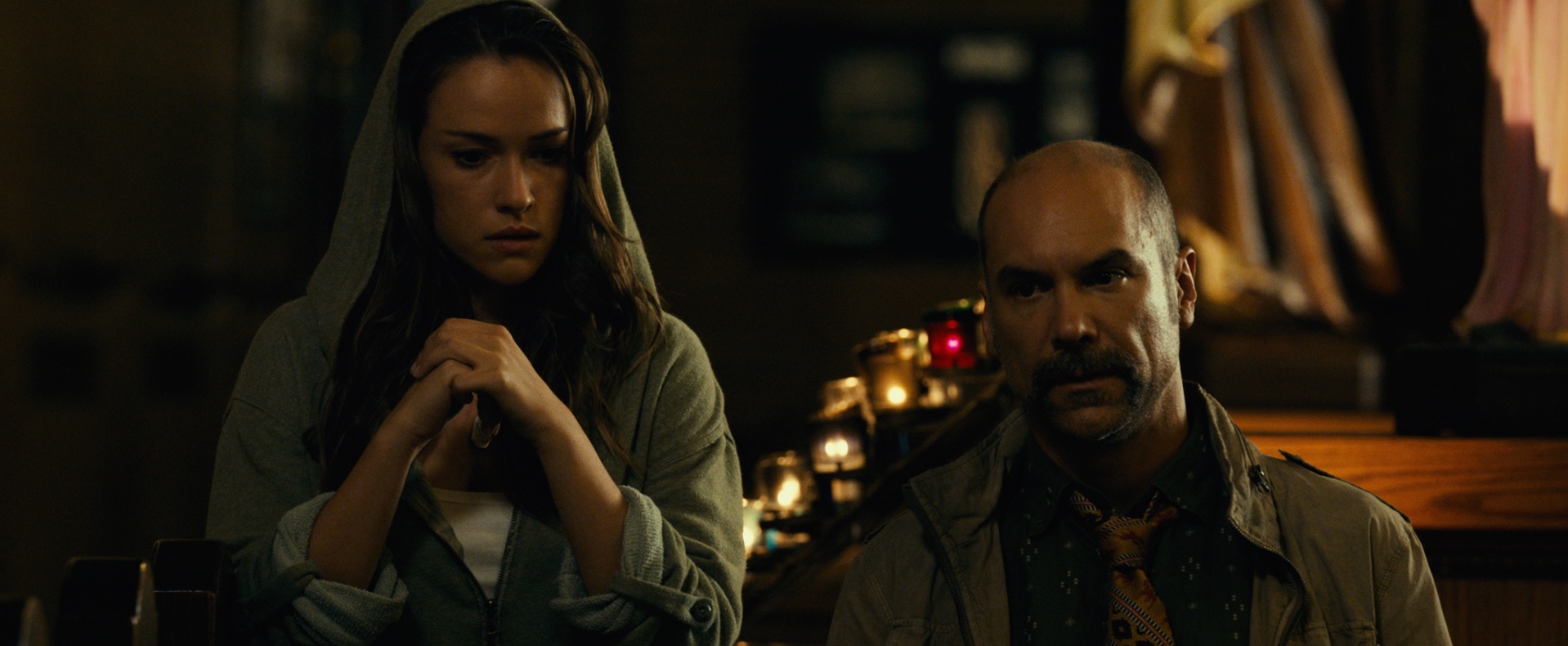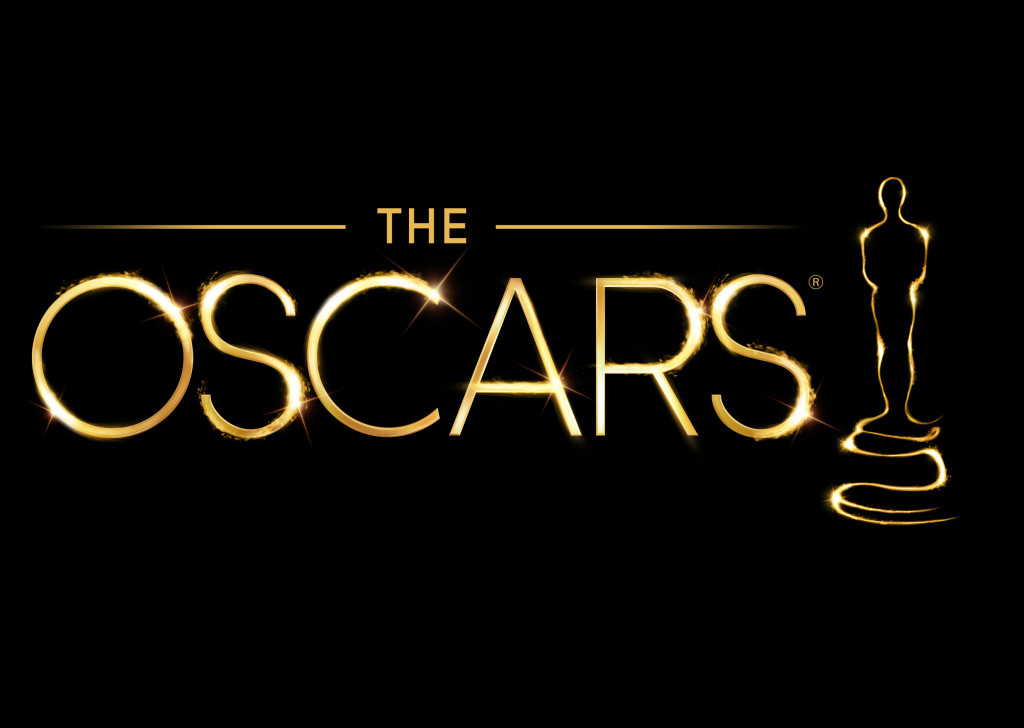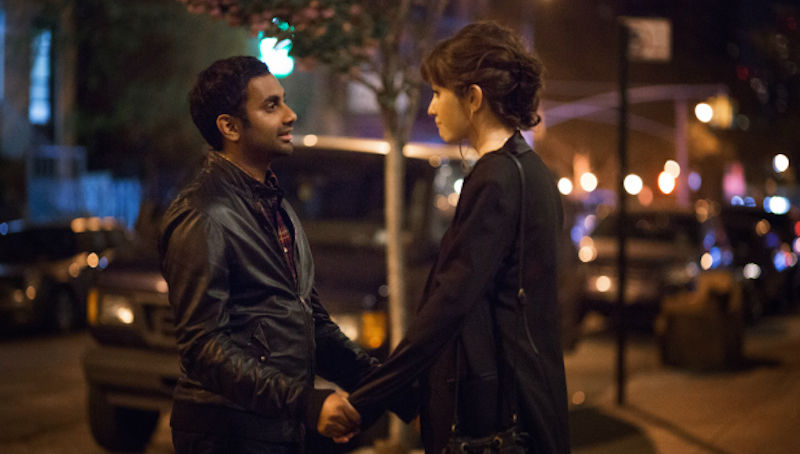
Guest post written by Deborah Krieger. | Spoilers ahead.
Fritz Lang’s 1927 silent film Metropolis and Alex Garland’s 2015 film Ex Machina share many commonalities. While these two sci-fi films come from different countries (Germany and the UK, respectively) and from wildly differing eras, social contexts, and technological standpoints, both films have much in common in terms of their portrayals of gender, as well as the key association of technology with social class divides. They also represent an ascribing of an inhuman machine-influenced identity to those who work with said technology, creating a blurring of the lines between man and machine. I will compare and contrast how these two films, made nearly ninety years apart from one another, represent the male and female genders as well as divergent views on the purposes, users, and creators of technology, highlighting the ways in which Ex Machina is indebted to and reflects its predecessor.
In Metropolis, technology is depicted as necessary for all of society to coexist. Yet it is associated with the working class — particularly the male worker — who must give their blood, sweat, and labor to the “Heart Machine” located underground in the City of the Workers, depicted at the opening of the film. The workers of Metropolis are not only associated with machines and technology through their daily labor, but they are also depicted as extremely robotic, monotonous, and identical in their movements. They are all dressed in the same masculinized dark clothing and live what could be called robotic lifestyles, following the same work schedule day in and day out. Even the workers’ walking is mechanized in the shift change scene. Apart from Maria, the only named members of the working class are male: Grot (Heinrich George), the foreman and Georgy/11811 (Erwin Biswanger), an aspect highlighted by Gabriela Stoicea in her article “Re-Producing the Class and Gender Divide: Fritz Lang’s Metropolis,” in which she discusses Karl Marx’s de-emphasizing of the female worker within the context of labor:
“One of the most striking elements in this sequence is the complete absence of women and children, as male workers return to a seemingly deserted city […] by all rules of logic, the so-called worker’s city in Metropolis should therefore be a space inhabited mostly by women and children. Visually, however, there are next to no traces of their existence […] Additionally, Marx himself refused to acknowledge the importance of women’s domestic labor for the daily reproduction of workers’ labor power since it was not remunerated financially.” (Stoicea, 25)
In stark contrast to the working class, the wealthy class, of which the protagonist Freder (Gustav Fröhlich) belongs, lives far above the city in the “Club of the Sons,” where they are surrounded by lush, ethereal flora of the “Pleasure Gardens” and are free to move about, to run, to dance as they wish to, with highly differentiated forms of dress and body language. When we are first introduced to the “Club of the Sons,” we see young men and women cavorting in a fantastical garden landscape, replete with strange plants and a bubbling fountain. The women — described by Stoicea as “prostitutes” (Stoicea, 32) — wear ornate, highly sexualized dresses, while the men are largely dressed in white — a symbol of luxury in that one must have the resources to clean the material if it gets dirty, which the inhabitants of the “Club of the Sons” clearly do.

While Metropolis assigns technology and machinery to a (masculinized) working class, Ex Machina clearly associates technology, as well as the subsequent dehumanization of its users and makers, with the wealthy upper class and with more pastoral elements (see Figures 3-7 in Appendix A), yet still maintains a highly masculinized atmosphere. Nathan Bateman (Oscar Isaac), the creator of the Google- and Facebook-esque site Bluebook is depicted as incredibly well-off, with an entire underground compound filled with cutting edge software and hardware, hidden away on a massive tract of land (rather than in an urbanized environment). In Metropolis, the most advanced technology is in the Pleasure Garden itself, kept away from the lowly Underground City.
Bluebook is the creation that gained Nathan his fame and fortune; notably, Nathan’s creation of the female robots, Kyoko (Sonoya Mizuno) and Ava (Alicia Vikander), is not necessary for his economic survival. These female robots are merely prototypes created for his enjoyment in a variety of ways both servile and sexual; their use connects the technology depicted in Ex Machina with the leisure and privilege of the upper classes, rather than as something necessary for societal order and human survival. While arguably we could consider Bluebook, like Facebook and Google, to be necessary for humanity to some degree, these internet applications are not nearly as integral to the simple mechanical functioning of society in the way that the complex machinery is in Metropolis.
Additionally, while women are also hinted at as existing within a technological/labor-based context in Ex Machina, they are not even remotely important to the plot; in the beginning sequence of the film when Caleb (Domhnall Gleeson) learns he has won a prize allowing him to meet Nathan, the reclusive creator of Bluebook, there are various out-of-focus shots of female figures within the context of the Bluebook workplace, as well as text messages on Caleb’s phone from unseen female co-workers. However, it is the female robots, rather than the male humans, who propel the film’s climax and ending.
The archetype of the female robot, or “fembot,” has long been a popular figure in media, be it live-action film, cartoons, comics, novels, and more. Many societies have grappled with this powerful but dangerous figure, giving us works as different in tone and theme as Blade Runner (directed by Ridley Scott, 1982) and Austin Powers (directed by Jay Roach, 1997-2002) from the U.S. as well as Chobits (manga by CLAMP; 2000-2002) and Ghost in the Shell (directed by Mamoru Oshii, 1995) from Japan. Metropolis and Ex Machina are merely the oldest and one of the most recent examples, respectively, in a long line of films (and texts) that associate women with technology in this manner, presenting them as potent and potential threats to societal order and to the men who create and aim to control them.

In Metropolis, the female robot in question is a recreation of the inventor Rotwang (Rudolf Klein-Rogge)’s beloved Hel, who married the city’s leader, Joh Fredersen (Alfred Abel), and gave birth to Freder. When Joh Fredersen learns of Rotwang’s creation and of Maria (Brigitte Helm), the woman from the Underground City who prophesies the mediation of the two classes, he convinces Rotwang to give the robot Maria’s image, intended be a demagogue, to fool the workers into violently rioting and to lead them to their own destruction. The robot Maria (aka “Maschinenmensch”) goes on to perform an extremely sexualized, hypnotic dance for the wealthy young men of the Club of the Sons, using her body for the purposes of her creator.
Ava and Kyoko in Ex Machina share several common aspects with the robot Maria in Metropolis, but they also differ in some key ways. Ava and Kyoko are both created for sexualized purposes. It is unclear that Kyoko (who writer Zhuojie Chen called “a white man’s plot device“) is actually a machine until late in the film, as Caleb — and the audience by proxy — assumes she is a human woman who does not understand English and thus does not speak. In fact, Kyoko is a robot with whom Nathan engages sexually, and Ava, it is revealed, is also created to respond to intercourse, as Nathan tells Caleb:
“You bet she can fuck […] in between her legs, there’s an opening with a concentration of sensors. If you engage them in the right way, it creates a pleasure response. So if you wanted to screw her, mechanically speaking, you could, and she’d enjoy it.”
Thus the male sexual consumption of the female robot hinted at in Metropolis is taken to its literal extreme in Ex Machina. Later in the film, it is revealed that Caleb was not randomly selected to meet Nathan and perform the Turing test on Ava; his internet searches and pornography preferences were used in constructing Ava’s face and body, thus emphasizing the extreme disconnect between the creation of the robots in Metropolis and Ex Machina. In the former, the robot is created for love and is corrupted to perform evil tasks, whereas Ava was designed and programmed from the start to be able to hurt and manipulate Caleb.


Additionally, the female robots in Metropolis and Ex Machina both make use of the media in which they are represented to complete their seduction of the male characters in a rather self-referential way — and, in the case of Ex Machina, the seduction of the audience through Caleb. Metropolis is a silent film; therefore the robot Maria must use her body in order to establish her power, which she does during her dance sequence. Even if she speaks, the audience cannot hear her — we can only read her words in the intertitles — so her seduction of the audience must be as effective as her seduction of the characters in the text; thus the focus on her scantily-clad physical form. Conversely, Ex Machina has the benefit of being a non-silent film, which allows Ava to seduce both Caleb and the audience with her body language as well as with her voice and personality, revealed in their ongoing conversations. Thus, we see a similarity between the methods of these two female robots, even if their texts differ in technological capabilities.
Both films use dance sequences to create a sense of confusion in a designated male viewer or viewers, controlled by the male masters of the robot in question; Maria dancing for the wealthy men of the city, orchestrated by Joh Fredersen and Rotwang, is echoed in the seemingly randomly-inserted disco sequence in which Kyoko and Nathan perform a routine in unison while Caleb can only watch, horrified and uneasy. Indeed, Ex Machina‘s dance sequence has several visual parallels to that in Metropolis, including the way the dancing female robots are shot: from the front, with circular decorations in the background, and a focus on the sexualized, half-dressed female body in motion (see Figures 1 and 2 in Appendix A). Director Alex Garland said in an interview with Wired that he wanted to avoid making viewers think of Metropolis’s Maria when designing Ava, but it seems that he still owes the earlier film a debt in terms of the narrative weight and significance of their dance scenes and depiction of gender.
While the female robots of Metropolis and Ex Machina are important characters within their respective films, they are far from the main protagonists. In what is perhaps a reference to Freder’s narrative journey from innocence to disenchanted knowledge, Ex Machina’s Caleb undergoes a similar trajectory. Both characters begin the film in one world, only to have their lives changed upon visiting an entirely different world — in both cases, literally an underground world. Freder spends the beginning of Metropolis gallivanting in the Pleasure Gardens without a care in the world, but soon learns of the oppression of the lower class when he visits the Underground City and meets Maria, who prophesies a promise of peace and resolution.
Likewise, Caleb begins in the historical world in a brief prologue, where it is revealed that he has won the fateful contest. As he descends into Nathan’s compound, his optimism and ability to trust are constantly tested by Nathan as well as by Ava, to the point where Caleb becomes unsure of whether he himself is an actual human being. Caleb reaches a turning point after a session with Ava, as well as his discovery of videotapes in which Nathan’s older robot models destroy themselves trying to break free. He begins to doubt his own humanity in the light of Nathan’s cavalier approach to creating and destroying life in his robots, so to speak, and in a particularly gruesome scene, slices open a vein on his forearm to make sure he can bleed. It is also during this sequence that Caleb makes the decision — or so he believes — to betray Nathan and help Ava escape.

One other major difference between these two films is the depiction (or lack thereof) of the robot women’s potential for subjectivity. In Metropolis, only the workers and young men of the Club of the Sons believe that the robot Maria is human; Rotwang and Joh Fredersen know the truth, and their point of view holds sway as they manipulate the robot Maria’s body for their own purposes. As an audience, we are never sure whether the robot Maria has a consciousness or independent will. This issue is touched upon in the film, as Rotwang assures the real Maria:
“Joh Fredersen is looking for an excuse to use violence against the workers […] she will destroy their belief in the Mediator! But she is only a machine — made to obey my will. While my power holds, she will do so […] but already I feel I have lost that power, and I am fearful of the consequences!”
However, the audience never sees Rotwang’s apprehension result in any actions of which Joh Fredersen would not have approved. Conversely, the main thrust of Ex Machina‘s narrative is devoted to Caleb’s exploration about whether Ava has a consciousness, a subjectivity, or is merely programmed to act the way she does. In contrast to Metropolis, which only mentions a loss of control briefly, Ex Machina seems to answer this question in the affirmative, as Ava takes the initiative to turn Kyoko against Nathan, kill him, and abandon Caleb to die. Her actions indicate that Ava has, for all intents and purposes, free will, or at least a desire for self-preservation at all costs, in the light of her and Caleb’s realization that Nathan plans to disassemble her when he builds an upgrade.
Of course, it is also possible that the sadistic Nathan could have given Ava and Kyoko a desire to escape as part of their design (rather than such a desire being evidence of AI), only to torture them by refusing to set them free, which might have led them to self-destruct as earlier models are shown to have done. When Ava and Kyoko turn on Nathan, we see Ava whispering something indecipherable in Kyoko’s ear, which might be what switches Kyoko from acting obedient to seeking retribution. Additionally, it could be argued either way that Kyoko revealing herself as a robot to Caleb is part of Nathan’s programming, or that it represents Kyoko rebelling against her creator, thus hinting at a level of AI capabilities she had not previously demonstrated.
Yet through the changing of the point of view in the last sequences of the film from Caleb, trapped in a room of the compound, to Ava, who leaves the compound in the helicopter and enters the human world, we see that Ava has a consciousness and becomes, for the last few minutes, a de facto co-protagonist of the story. Even if her wants and desires are indeed programmed to a degree, the fact that Ava has such feelings and is able to act upon them is evidence that Nathan cannot ultimately control his creation, while in Metropolis, it is less certain whether Rotwang ever truly loses control.

It’s particularly interesting to think about the way Ava performs humanity within the context of Descartes, whose famous quotation “I think, therefore I am,” complicates how we might think about the difference between a human and a machine. According to Neil Badmington, Descartes does not separate humanity versus machinery by virtue of bodily differences — i.e. flesh-and-blood versus hardware — but rather, through the possession of “reason,” which is “the only thing that makes us men and distinguishes us from the beasts” (Descartes in Badmington, 16). However, Badmington challenges Descartes’s certainty, imagining the following hypothetical:
“If a machine — in keeping with the spirit of his fantastic scenario — were constructed in such a way that it had what might be called ‘an organ for every occasion,’ it would, according to the letter of Descartes’s own argument, no longer be possible to maintain a clear distinction between the human and the inhuman. Given enough organs, a machine would be capable of responding in a manner utterly indistinguishable from that of a human being. Reason, no longer capable of ‘distinguish[ing] us from the beasts,’ would meet its match, its fatal and flawless double.” (Badmington, 18)
There can be little doubt that Ava fulfills this prophecy; over the course of the film, it becomes increasingly clear that she is “capable of responding in a manner utterly indistinguishable from that of a human being” (Badmington, 18), much to Nathan’s and Caleb’s detriment. As Garland’s inspiration for the film came from a conversation with his neuroscientist friend who argued that machines could never have consciousness, this ending serves to make his point that much more strongly.
The endings of Metropolis and Ex Machina differ on the relationship between technology and humankind, and present outcomes at the opposite ends of the spectrum. At the end of Metropolis, Joh Fredersen (the “head”) and the engineer Grot (“the hands”) are joined in solidarity and unity by Freder, the prophesied mediator (the “heart”), ultimately representing a happy ending and a promise of coexistence. In contrast, the ending of Ex Machina nullifies this premise, presenting humanity and technology as forces at cross-purposes (despite Garland’s claim that it’s “a pro-AI movie”): Nathan intends to destroy Ava when he makes a newer model of the AI; in return for this mistreatment, Ava and Kyoko turn on Nathan and Caleb, betraying them, stabbing Nathan, and leaving Caleb to die in the sealed-off compound while Ava, disguised as a human, escapes into the real world. The endings of Metropolis and Ex Machina prove particularly ironic, given that Lang was critical of industrialization, while Garland, who deems Ex Machina “pro-AI” sets machines and humans at odds by the film’s end. As technology and robotics improve within our society, it remains to be seen which film’s view is more accurate: whether these new machines, designed to be so like us, will be friend, foe, or more.
See also at Bitch Flicks:
On Ex Machina, Artificial Intelligence of Color, and How to Become a (White) Woman
Ex Machina: Scavenging for Parts in a Patriarchal World
Ex Machina‘s Failure to Be Radical: Or How Ava Is the Antithesis of a Feminist Cyborg
Ex Machina and Her: Dude, the Internet’s Just Not That Into You
Manic Pixie Revolutionary Awakenings
Literature Cited:
Anders, Charlie Jane. “From Metropolis to Ex Machina: Why Are So Many Robots Female?” io9, April 21, 2015. Web. 1 May 2016.
Badmington, Neil. “Theorizing Posthumanism.” Cultural Critique, No. 53, Posthumanism (Winter, 2003): 10-27. Web. 8 May 2016.
Garland, Alex. “Ex Machina’s Director on Why A.I. is Humanity’s Last Hope.” Interview with Angela Watercutter. Wired, April 7, 2015. Web. 8 May 2016.
Johnson, Kjerstin. “How ‘Ex Machina’ Toys with its Female Characters.” Bitch Media, May 8, 2015. 8 May 2016.
Rose, Steve. “Ex Machina and sci-fi’s obsession with sexy female robots.” The Guardian, January 15, 2015. Web. 1 May 2016.
Stoicea, Gabriela. “Re-Producing the Class and Gender Divide: Fritz Lang’s Metropolis.” Women in German Yearbook, Vol. 22 (2006): 21-42. 8 May 2016.
Watercutter, Angela. “Ex Machina Has a Serious Fembot Problem.” Wired, April 9, 2015. Web. 1 May 2016.
Appendix A:
Figure 1. Maria dances in Metropolis.
Figure 2. Kyoko dances in Ex Machina.
Figure 3. The City of the Workers, Metropolis.
Figure 4. The Pleasure Gardens, Metropolis.
Figures 5-7. Stills from Ex Machina of Nathan’s compound.
Deborah Krieger is the curatorial assistant at the Delaware Art Museum as well as an arts and culture writer and Fulbright Austria alumna. She has written for BUST Magazine, PopMatters, Paste Magazine, Whitehot Magazine of Contemporary Art, The Mary Sue, and The Awl. She also runs her own art blog, I On the Arts, and curates her life in pictures @Debonthearts on Twitter and Instagram.
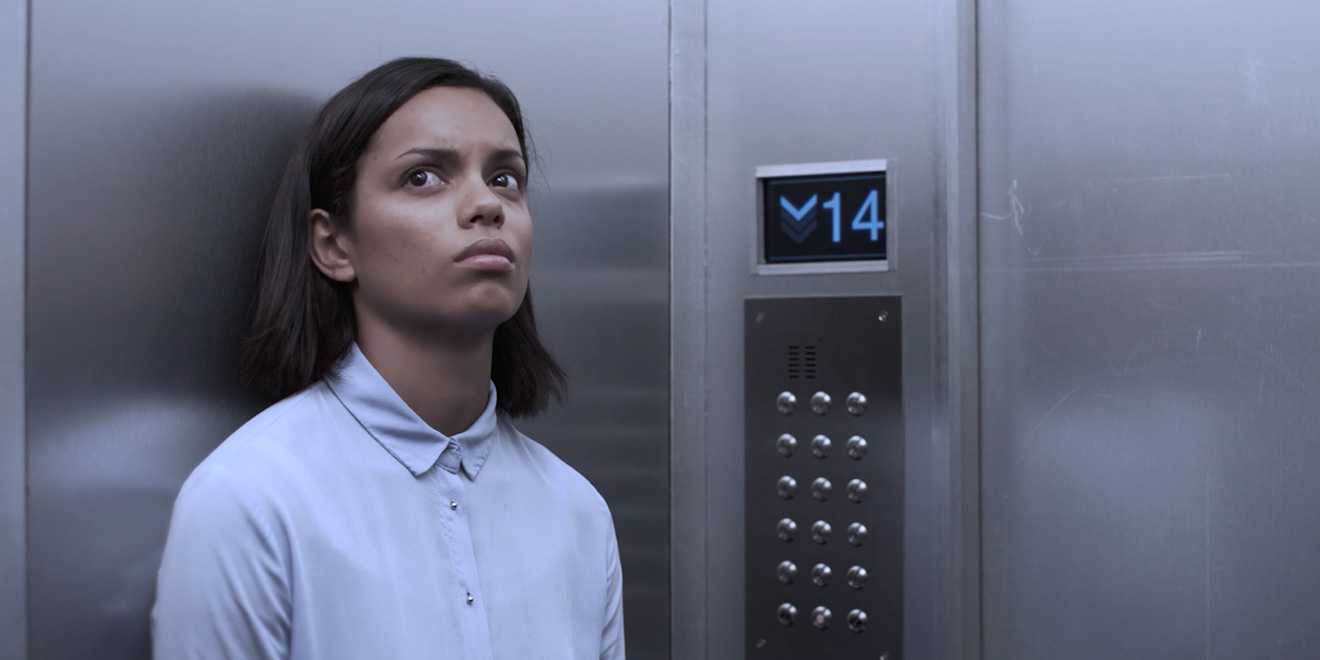

![On Our Terms: A Black [Women’s] Horror Film Aesthetic](https://btchflcks.com/wp-content/uploads/2017/11/Ganja-and-Hess-2.jpg)



